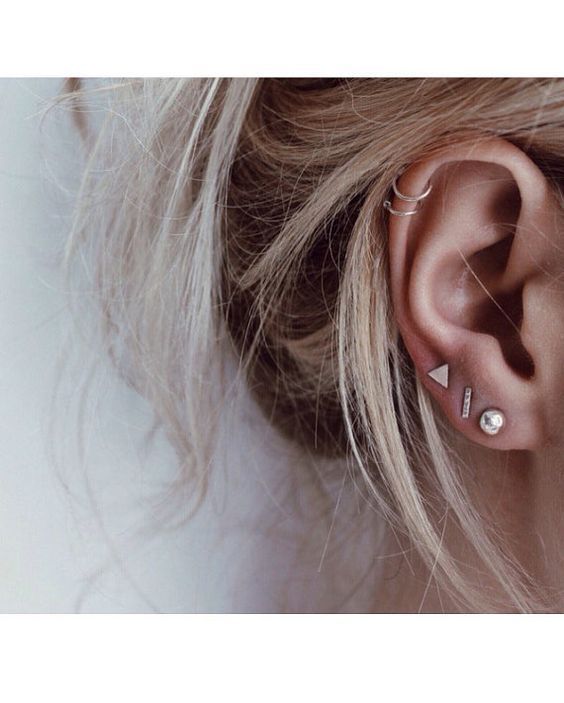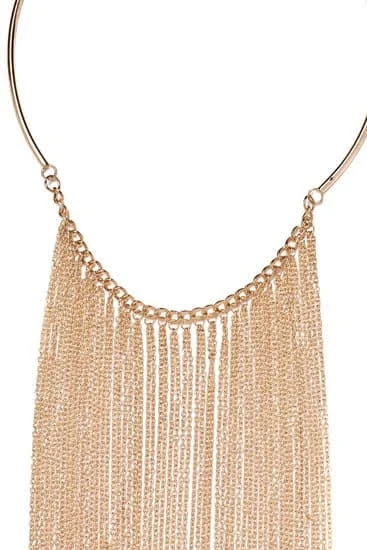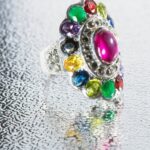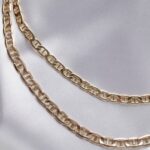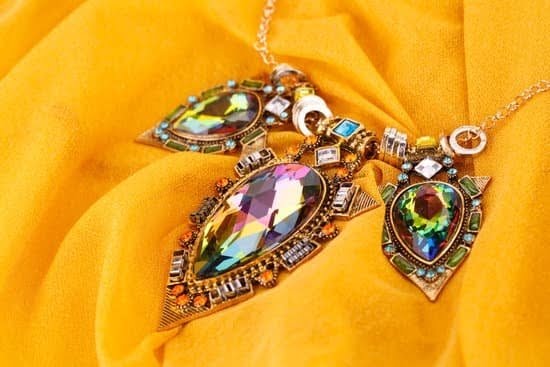Gold plated jewelry has become increasingly popular in recent years due to its affordability and versatility. However, many people wonder: can gold plated jewelry tarnish? In this article, we will explore the ins and outs of gold plated jewelry, from what it is to the factors that contribute to tarnishing. We will also discuss how to prevent tarnishing and provide some tips for cleaning and maintaining your gold plated pieces.
Gold plated jewelry is a cost-effective alternative to solid gold pieces, offering the same lustrous appearance without the hefty price tag. But what exactly is gold plated jewelry? We will delve into the process of creating gold plated pieces and how they differ from other types of jewelry. Understanding the composition of gold plated jewelry is essential in comprehending why and how it can tarnish over time.
Tarnishing is a natural oxidation process that occurs over time, affecting all types of metal, including gold plating. We will examine the science behind tarnishing and explore the various factors that contribute to this phenomenon. By understanding why gold plated jewelry tarnishes, you can take proactive steps to prevent it from happening and prolong its longevity.
What Is Gold Plated Jewelry?
Gold plated jewelry is a type of jewelry that has a thin layer of gold applied to the surface of another metal, usually brass or sterling silver. This process gives the jewelry the appearance and luster of real gold without the hefty price tag. Gold plating is a popular choice for fashion jewelry, as it provides an affordable option for those looking to add a touch of luxury to their wardrobe.
What Is Gold Plated Jewelry?
Gold plated jewelry is created through a process called electroplating, where a thin layer of gold is applied to the surface of the base metal using an electric current. This layer can be as thin as 0.05% to 0.5% microns, making it more susceptible to tarnishing compared to other types of precious metals such as solid gold or gold-filled jewelry.
- Base Metal: Brass or sterling silver are commonly used as base metals for gold plated jewelry
- Thin Layer of Gold: The layer can range from 0.05% to 0.5% microns
- Affordability: Gold plating provides a cost-effective alternative to solid gold
Even though it can give the appearance of real gold, it’s important to note that gold plated jewelry does have its limitations. One common question that arises among consumers is, “Can gold plated jewelry tarnish?” The answer is yes – due to its thin layer of gold, tarnishing can occur over time if proper care is not taken.
- Potential for Tarnishing: The thin layer of gold on plated jewelry makes it susceptible to tarnishing
- Care and Maintenance: Proper care and maintenance are essential in preserving the longevity and appearance of gold plated jewelry
- Affordable Option: Despite the risk of tarnishing, many still consider it an attractive and budget-friendly choice
The Tarnishing Process
Gold plated jewelry is a popular choice for those looking to add a touch of luxury to their accessories without breaking the bank. However, one common concern that people have about gold plated jewelry is its susceptibility to tarnishing. But how exactly does the tarnishing process occur for gold plated jewelry?
The tarnishing process for gold plated jewelry can occur when the thin layer of gold plating begins to wear off, exposing the base metal underneath. This base metal, typically copper or silver, can react with moisture, air, and other substances in the environment, leading to a change in color and overall appearance of the jewelry. As a result, the once bright and shiny gold plating may start to appear dull and discolored.
In addition to exposure to moisture and air, another factor that contributes to the tarnishing of gold plated jewelry is exposure to certain chemicals. Substances such as perfume, lotions, and household cleaning products contain ingredients that can accelerate the tarnishing process by interacting with the base metal of the jewelry. It’s important to be mindful of what comes into contact with your gold plated pieces in order to minimize the risk of tarnishing.
Factors That Contribute to Tarnishing
When it comes to gold plated jewelry, tarnishing can be a common concern for many wearers. While gold plated jewelry offers the look of real gold at a more affordable price, it is important to note that this type of jewelry is not immune to tarnishing. Understanding the factors that contribute to tarnishing can help you better care for your gold plated pieces and prolong their longevity.
1. Exposure to Moisture: One of the main factors that can contribute to tarnishing of gold plated jewelry is exposure to moisture. Whether it’s from sweat, water, or humidity in the air, moisture can cause the thin layer of gold on the jewelry to react and eventually tarnish.
2. Chemicals: Another factor that can lead to tarnishing is exposure to chemicals. This includes substances such as lotions, perfumes, hair products, and cleaning agents. These chemicals can cause the protective layer of gold plating to wear off more quickly, leading to tarnishing.
3. Skin pH Levels: The natural pH levels of an individual’s skin can also play a role in how quickly gold plated jewelry tarnishes. Skin with higher acidity levels may cause the plating to deteriorate more rapidly than skin with lower acidity levels.
By understanding these factors that contribute to tarnishing, you can take steps to minimize their impact and keep your gold plated jewelry looking its best for longer.
How to Prevent Tarnishing of Gold Plated Jewelry
Gold plated jewelry is a popular choice for those who want the look of gold without the high cost. However, one concern that many people have is whether gold plated jewelry can tarnish. The good news is that with proper care, tarnishing can be prevented, allowing your gold plated jewelry to maintain its lustrous appearance for longer.
Keep It Dry
One of the best ways to prevent tarnishing of gold plated jewelry is to keep it dry. This means removing your jewelry before swimming or showering, as exposure to water and moisture can cause the metal underneath the gold plating to rust and corrode, leading to tarnishing.
Avoid Contact With Chemicals
Chemicals found in household cleaners, perfumes, lotions, and even some soaps can cause the gold plating on your jewelry to wear away and tarnish. To prevent this from happening, it’s important to remove your jewelry before using any chemical products and to put it on only after these products have been fully absorbed or dried.
Store Properly
Proper storage can also help prevent tarnishing of gold plated jewelry. When not being worn, store your jewelry in a cool, dry place away from direct sunlight. Consider storing each piece of jewelry separately in a soft pouch or lined box to prevent scratching and rubbing against other pieces, which can lead to wearing away of the gold plating and tarnishing.
By following these tips for preventing tarnishing of gold plated jewelry, you can enjoy your pieces for years to come without having to worry about them losing their shine and luster.
Cleaning and Maintenance Tips for Gold Plated Jewelry
Use a Soft Cloth
When it comes to cleaning gold-plated jewelry, using a soft cloth is key. Gently wipe the jewelry with a clean, soft, and dry microfiber cloth to remove any dirt or oils that may have accumulated on the surface. Avoid using rough or abrasive fabrics as they can scratch the delicate surface of the gold plating.
Avoid Harsh Chemicals
Harsh chemicals such as bleach, ammonia, or even some jewelry cleaning solutions can damage the gold plating on your jewelry. It’s best to avoid exposing your gold-plated pieces to these substances. Instead, opt for mild soap and warm water to gently clean the jewelry. Be sure to dry the pieces thoroughly after washing them.
Store Properly
Proper storage is essential in maintaining the luster of your gold-plated jewelry. Store your pieces in a separate compartment or a soft pouch to prevent scratches and minimize exposure to air and moisture. This will help prolong the lifespan of your gold-plated jewelry and reduce the risk of tarnishing.
By following these cleaning and maintenance tips, you
Common Myths About Gold Plated Jewelry Tarnishing
Many people believe that gold plated jewelry tarnishes easily, but this is not entirely true. While it is possible for gold plated jewelry to tarnish over time, there are many misconceptions surrounding the process. One common myth is that the base metal used in gold plated jewelry will always cause it to tarnish quickly. However, the quality of the base metal and the thickness of the gold plating can significantly affect how long it takes for tarnishing to occur.
Another myth about gold plated jewelry is that it cannot be cleaned or polished once it starts to tarnish. In reality, there are several methods that can be used to clean and maintain the appearance of gold plated jewelry. With proper care and maintenance, gold plated jewelry can retain its luster for a long time.
Additionally, some people believe that wearing gold plated jewelry in water or exposing it to certain substances will inevitably lead to tarnishing. While prolonged exposure to water, sweat, and chemicals can contribute to tarnishing, proper care and storage of gold plated jewelry can help prevent this from happening. By understanding these myths and taking proactive measures, you can keep your gold plated jewelry looking beautiful for years to come.
| Myth | Fact |
|---|---|
| The base metal used in gold plated jewelry always causes quick tarnishing. | The quality of the base metal and thickness of the plating affect how quickly tarnishing occurs. |
| Once gold plated jewelry starts to tarnish, it cannot be cleaned or polished. | There are several methods available for cleaning and maintaining the appearance of gold plated jewelry. |
| Exposure to water or certain substances will inevitably lead to tarnishing. | Proper care and storage of gold-plated jewelry can help prevent tarnishing despite exposure. |
Conclusion
In conclusion, gold plated jewelry can indeed tarnish over time, but with proper care and maintenance, it is possible to prolong its longevity. Understanding the nature of gold plated jewelry and the tarnishing process is crucial for preventing and minimizing tarnishing.
Factors such as exposure to moisture, chemicals, and even the wearer’s skin chemistry can contribute to the tarnishing of gold plated jewelry. By following a few simple steps, such as storing jewelry properly and avoiding contact with harsh substances, individuals can help preserve the appearance of their gold plated pieces.
In addition to preventive measures, regular cleaning and maintenance can also play a significant role in keeping gold plated jewelry looking its best. Using gentle cleaning methods and avoiding abrasive materials can help maintain the shine and overall quality of the jewelry. It’s important to note that while some myths about gold plated jewelry may claim that tarnishing is inevitable, taking proactive steps can make a difference in preserving its appearance.
Ultimately, the decision to invest in gold plated jewelry comes with an understanding that it requires some level of attention and care. By being mindful of how it is worn, stored, cleaned, and maintained, individuals can enjoy their gold plated pieces for a longer period of time without significant tarnishing. With the right knowledge and practices in place, it is possible to extend the lifespan of gold plated jewelry and continue enjoying its beauty for years to come.
Frequently Asked Questions
How Long Can Gold-Plated Last?
The longevity of gold-plated jewelry ultimately depends on factors such as the thickness of the gold layer, how often it is worn, and how it is cared for. With proper maintenance and care, gold-plated jewelry can last for a few years before showing signs of wear or tarnishing.
Is It OK to Shower With Gold-Plated Jewelry?
While it is generally safe to shower with gold-plated jewelry, doing so too frequently could potentially damage the plating over time. The chemicals in shampoos, conditioners, and soaps can accelerate the tarnishing process. It’s best to remove gold-plated jewelry before showering to prolong its lifespan.
How Do You Remove Tarnish From Gold-Plated Jewelry?
To remove tarnish from gold-plated jewelry, a soft polishing cloth can be used to gently buff away any discoloration or dullness. Harsh cleaning chemicals or abrasive materials should be avoided, as they can cause damage to the delicate gold layer. Additionally, storing gold-plated jewelry in airtight containers when not in use can help prevent tarnishing.

Welcome to my jewelry blog! My name is Sarah and I am the owner of this blog.
I love making jewelry and sharing my creations with others.
So whether you’re someone who loves wearing jewelry yourself or simply enjoys learning about it, be sure to check out my blog for insightful posts on everything related to this exciting topic!

